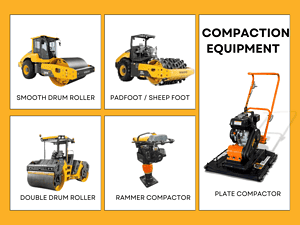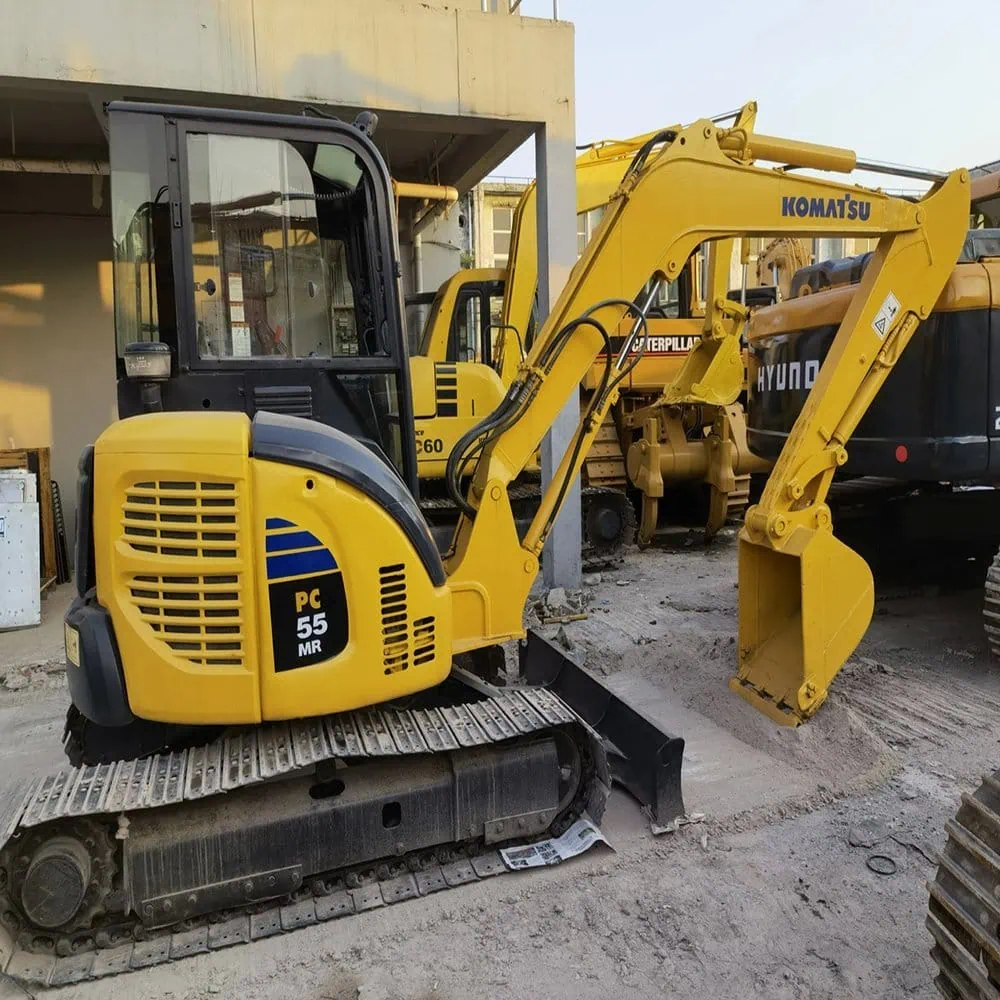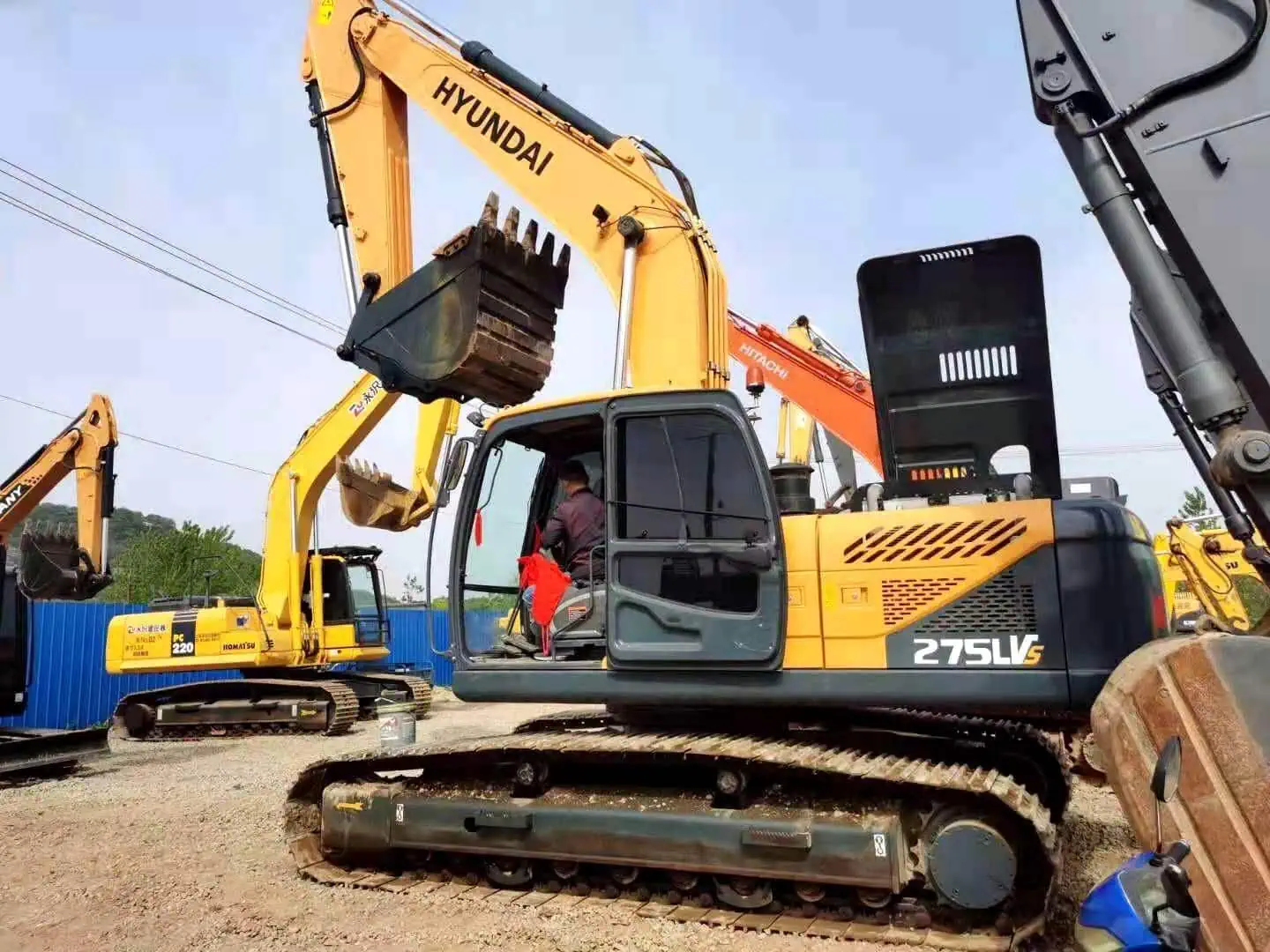When it comes to a small construction project, you need the right equipment. Whether you’re digging trenches, moving materials, or clearing debris, the choice between using a skid steer or a backhoe can make a big difference. In this article, we’ll take a look at the pros and cons of each to help you decide which machine is right for your small construction project.
When faced with the choice between a skid steer VS pelle rétrocaveuse, it’s essential to evaluate your project’s specific requirements. A skid steer is known for its maneuverability and versatility, making it ideal for tight spaces and fast-paced tasks. On the other hand, a pelle rétrocaveuse is better suited for heavy-duty excavation tasks, offering enhanced digging power and stability. Read on to discover which machine fits your small construction project best.
With those basic differences in mind, let’s take a closer look at what each machine has to offer and when you would choose one over the other.
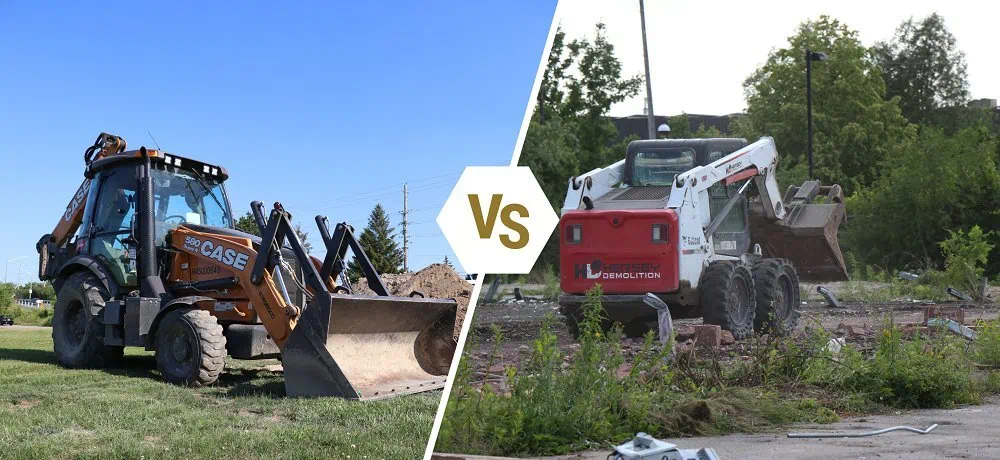
Table des matières
BasculerWhat is a Skid Steer?
It’s designed this specific way so the operator can keep all their levers and pedals for controlling the skid steer with their hands and feet – no steering wheel necessary. Combine that with its powerful hydraulics and you’ve got a piece of equipment that quickly becomes a jack-of-all-trades. Also popular because it can use a wide variety of different attachments that slide into a “quick attach” feature on the front of the machine with the flip of a lever.
Key Features of a Skid Steer:
- Versatility: With the ability to use different attachments, skid steers can perform a wide range of tasks, making them valuable for different types of jobs and industries.
- Ease of Operation: Skid steers are relatively easy to operate, with many models featuring intuitive controls and simple steering mechanisms.
- Cost-Effective: Although the initial purchase price can be high, skid steers can be more cost-effective in the long run because of their versatility and ability to complete various tasks.
Applications in Small Construction Projects:
- Landscaping: Skid steers are commonly used for grading, leveling, and clearing debris in landscaping projects.
- Excavation: While they have limited digging depth, skid steers are excellent for shallow trenching, digging small holes, and performing earth-moving tasks.
- Material Handling: With attachments like pallet forks and buckets, skid steers are great for loading and unloading materials around the job site.
| Feature | Skid Steer |
| Size | Compact, ideal for confined spaces |
| Maniabilité | Superior; can turn in tight spaces |
| Attachments | Wide variety of attachments available |
| Speed | Quick in loading, unloading, and grading |
What is a Backhoe?
In addition to regular digging, many backhoes are also equipped with specialized attachments such as hammers, breakers, augers, and compactors, further increasing their usefulness and versatility on job sites. Backhoes are available in a wide variety of sizes and configurations, from compact, walk-behind models to large tractor-type models for farm and utility work, to high-horsepower, articulated models with four-wheel drive for tough conditions and off-road use. No matter the size of the machine, backhoes are typically operated by a single operator who can perform both loader and excavator work from the machine’s comfortable, air-conditioned cab.
Key Features of a Backhoe:
- Flexibility: Backhoe loaders have the ability to work in tight spaces and are well-suited for residential construction and smaller job sites.
- Cost-Effective: Instead of purchasing two separate machines (a loader and an excavator), a backhoe loader can handle both tasks, reducing the overall cost of equipment for a construction company.
- Transportation: Backhoe loaders are easy to transport from one job site to another, as they can be driven on regular roads and highways without special permits or escorts. This saves time and money when moving equipment.
Applications in Small Construction Projects:
- Snow Removal: A backhoe can be equipped with a snow plow or snow blower attachment for clearing driveways and parking lots.
- Landscaping: The digging and material handling capabilities of a backhoe make it useful for landscaping projects such as creating ponds, digging trenches for irrigation, or moving large amounts of soil and rocks.
- Septic System Installation and Repair: The digging and trenching capabilities of a backhoe are ideal for installing and repairing septic systems.
- Cemetery Maintenance: A backhoe can be used for digging graves and general maintenance in cemeteries.
| Feature | Backhoe |
| Functionality | Dual (excavation + material handling) |
| Digging Depth | Deeper than skid steers, ideal for trenching |
| Stability | Offers better stability for heavy tasks |
| Size | Larger than skid steers, less maneuverable |
| Cost | Higher initial investment and maintenance |

Comparing Skid Steer vs Backhoe for Small Construction Projects
When considering between a skid steer and a backhoe, it’s important to consider what specific tasks you need to
accomplish. Whether it’s excavation, material handling or maneuverability for your project, choosing the right machine can make a big difference in the efficiency and cost-effectiveness of what you’re working on.
Here’s a detailed comparison based on important features like maneuverability, digging depth, lifting capacity, speed, versatility, and cost:
| Feature | Skid Steer | Backhoe |
| Maniabilité | Superior for tight spaces: Compact design allows for easy navigation in confined areas like urban job sites or narrow pathways. | Less maneuverable: Larger size and turning radius make it less suitable for tight spaces, though it is stable in open areas. |
| Digging Depth | Limited, suitable for shallow tasks: Skid steers are ideal for light excavation, such as trenching or clearing. | Excellent for deeper excavation: Backhoes can dig trenches up to 14 feet deep, making them better for more intensive excavation tasks. |
| Capacité de levage | Ideal for light to medium lifting: Can handle tasks like lifting bags of materials or small equipment, with attachments like forks or buckets. | Suitable for heavy lifting: The backhoe is ideal for lifting large amounts of dirt, rocks, or heavy objects, thanks to its front loader and stabilizers. |
| Speed | Faster for material handling and grading: Skid steers are quicker at tasks that require moving and dumping materials, such as grading and clearing. | Slower, but efficient for excavation: Backhoes work at a slower pace compared to skid steers, but they excel at digging and handling more extensive excavation work. |
| Versatility | Highly versatile with attachments: Skid steers can adapt to various tasks with the right attachments, making them more adaptable for a range of functions. | Versatile, but more focused on excavation: While backhoes can handle a variety of tasks, their primary function is excavation, and they are less versatile than skid steers in other areas. |
| Cost | Lower initial cost and operational expenses: Generally more affordable, both in terms of upfront purchase price and long-term maintenance. | Higher upfront cost, more maintenance: Backhoes are more expensive to purchase and maintain, but they offer greater digging capacity and dual functionality. |
| Maintenance | Easier and cheaper to maintain: The simplicity of a skid steer’s design results in lower maintenance costs and ease of repair. | Requires more maintenance: Due to their complex systems and multiple functions, backhoes generally have higher maintenance requirements. |
Pros and Cons of Skid Steer for Small Construction Projects
Pros:
Compact and Maneuverable: The most outstanding feature of a skid steer is its size. The compact design allows it to work effortlessly in tight spaces and confined work areas, which make it the perfect machine for residential projects, small construction projects or landscaping jobs where space is an issue.
Speed:Moving dirt or materials from one place to another is something a skid steer is very good at, and is something it can do quickly. Some examples of when you would need to quickly move dirt or materials include: grading, moving loose topsoil or gravel and doing a quick cleanup.
Attachment Options:Versatility with attachments is one of the things that makes a skid steer so great. You can easily change from an auger to a bucket to forks or a brush cutter and perform a variety of tasks. Whether you’re dealing with dirt, rock,
concrete or any other material, a skid steer has an attachment to handle it.
Cost-Effective: Skid steers are typically less expensive to buy and maintain. If you’re a business or an individual on a budget, the lower operating cost makes a skid steer appealing, especially for non-major construction projects.
Cons
Limited Digging Depth: Skid steers are limited in their digging depth. In general, they can’t dig as deep as a backhoe and are not effective for plenty of deep trench work or foundation work.
Often Need to Reposition: Depending on the size of the bucket or the attachment, you may find that you have to reposition the skid steer a lot more to get your work done. This isn’t as efficient, especially if you have a lot of digging or material handling to do.
| Pros | Cons |
| Compact and maneuverable | Limited digging depth: Suitable only for shallow tasks |
| Cost-effective (lower upfront and maintenance costs) | Requires frequent repositioning for certain tasks |
| Fast for material handling and grading | Not suitable for deep excavation |
| Versatile with various attachments | Less stability for heavy lifting |
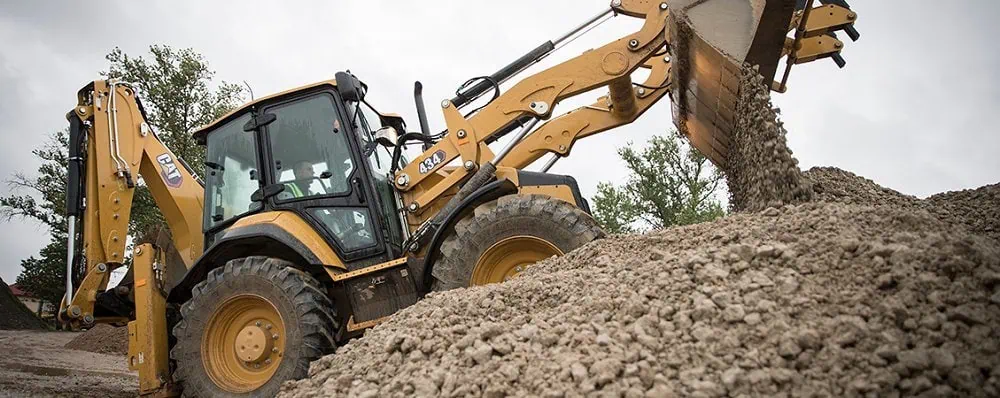
Pros and Cons of Backhoe for Small Construction Projects
Pros:
Powerful Digging: A backhoe is all about heavy-duty digging. With a long arm and bucket, a backhoe can dig at some serious depths. If you’re digging a trench, digging a foundation, or installing utilities, a backhoe excels at this. For example, backhoes can typically dig 10–14’ deep. This is deeper than a typical skid steer operator can handle with a loader or an excavator attachment.
Dual Functionality: With a front bucket and a backhoe at the rear, you get the best of both worlds. You have the loading and lifting capability of a front loader and you also have the digging, trenching, and foundation work of a backhoe.
Cons:
Size and Maneuverability: The size of a backhoe makes it more difficult to maneuver, especially in tight spaces. A backhoe typically has a wider turning radius and needs more room to work than a skid steer loader. Whether you’re working on a job in downtown urban areas or on a tight-lot site, this can be a real problem.
Higher Cost: In general, backhoes are more expensive. Not only are they more expensive to buy initially, but they can also be more expensive to maintain due to their complexity. This makes them a larger financial investment, especially if you’re working on smaller projects.
| Pros | Cons |
| Powerful for digging deep trenches and foundations | Larger and less maneuverable than skid steers |
| Dual functionality (excavation and material handling) | Higher initial cost and maintenance fees |
| Stable and capable of heavy lifting | Slower than skid steers for certain tasks |
When Should You Choose a Skid Steer for Small Construction Projects?
UN pelle rétrocaveuse is an extremely versatile and efficient piece of machinery, especially when you’re working on a small construction project that involves both digging and material handling. When the job involves deep digging, heavy lifting, and doing a little bit of everything, the backhoe can save you a ton of time and effort. Even though the backhoe is smaller and more agile than its larger cousin, the excavator, it’s just as capable when it comes to
handling all types of digging and lifting chores.
Some situations where you should choose a skid steerinclude:
- Landscaping projects: Grading, leveling, and clearing land with ease.
- Small excavation: Tasks that don’t require deep digging, such as trenching for irrigation lines.
- Tight spaces: Working in confined spaces like between buildings or on narrow residential plots.
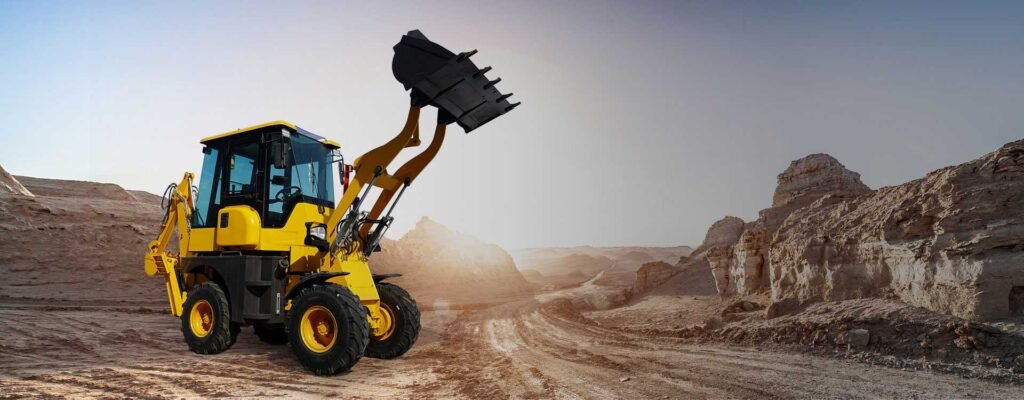
When Should You Choose a Backhoe for Small Construction Projects?
A backhoe is the right answer for smaller construction jobs when you’re looking at heavier digging. This would include things like digging deep trenches, digging a foundation and installing utilities, where the depth of excavation is important. A backhoe is also the right answer when you’re looking at anything that involves lifting large materials and heavy-duty digging.
You should choose a pelle rétrocaveusewhen:
Deep digging If you’re digging foundations, trenching for utilities or creating drainage systems, a backhoe is the machine you need. With its powerful digging arm, the backhoe can easily reach the depths you need for these
types of tasks. The backhoe’s bucket can also be changed out for different attachments, providing flexibility for different soil types and digging requirements.
Heavy material handling Backhoes aren’t just for digging; they’re also great for lifting and moving materials. If you have to clear debris, lift and move large amounts of soil or maneuver heavy rocks, the backhoe’s hydraulic lift system is designed to handle all of these tasks. Plus, its compact size allows for better maneuverability. This is especially important when dealing with tight spaces where larger machines would struggle.
Combination tasks Backhoes are chosen for their dual functionality. Unlike a single-purpose excavator, the backhoe can quickly change from one type of task to another. This makes them a perfect choice for jobs that need digging and lifting, as it allows the operator to work more efficiently, without the need to switch machines.
Tight spaces The backhoe’s maneuverability is another reason why it works well for small construction projects. Its compact size makes it perfect for use in tight areas, such as those found on a residential site or around an existing building. The backhoe can fit into confined spaces that would be difficult or impossible for a bigger machine to access.
Cost efficiency Compared to larger machines like bulldozers or excavators, a backhoe is price-efficient for smaller jobs. Not only is it capable of handling a variety of tasks, which reduces the need to have multiple machines on-site, but a backhoe is also less expensive to rent or buy. This makes it a great money-saving choice for small construction projects.
In summary, you want to use a backhoe when you’re working on a small construction project that involves deep digging, heavy lifting, or both. The backhoe offers the versatility and the ability to work in tight spaces that make it the one machine you need to get the job done. Whether you’re building a foundation, trenching for utilities, or doing just about anything else that requires digging, lifting, or a combination of both, thebackhoe is probably your best workhorse for getting the job done quickly and cost efficiently.
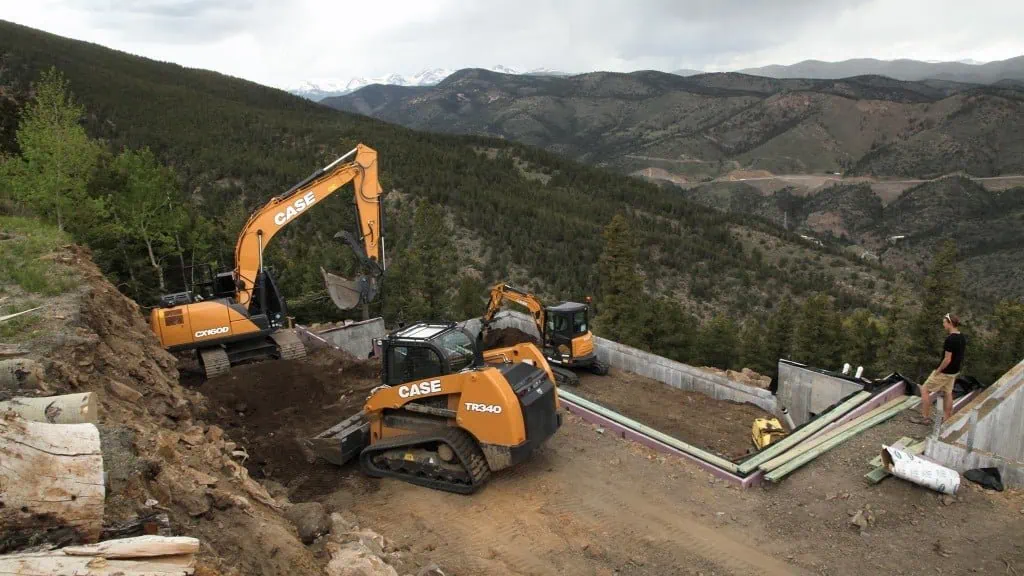
Cost Considerations: Skid Steer vs Backhoe for Small Projects
Cost is a huge factor when deciding between a skid steer and a backhoe. Besides the initial purchase cost, you have to think about how much fuel you’re going to use and the ongoing maintenance.
| Cost Factor | Skid Steer | Backhoe |
| Initial Cost | Lower: A skid steer is much more affordable upfront. | Higher: Backhoes come with more advanced features and thus cost more to purchase. |
| Efficacité énergétique | More fuel-efficient: Smaller engines and compact design allow for lower fuel consumption. | Consumes more fuel due to larger size and power requirements. |
| Maintenance Costs | Generally lower: Simpler design and fewer parts make maintenance cheaper. | Higher maintenance costs: More complex machinery with more parts to maintain. |
| Versatility vs. Costs | Affordable but less versatile: Ideal for smaller, specific tasks. | More expensive but versatile: Performs a wider range of functions but comes at a higher price. |
Conclusion
You decide whether to use a skid steer or a pelle rétrocaveuse based on the specific needs for your small construction project. If you want agility, cost-effectiveness and speed, then you want a skid steer. But if you need deeper excavation, dual functionality and the capability of doing heavy lifting, then you want a backhoe.
Each machine has its advantages designed to meet your specific project needs. You must carefully weigh your options. Consider factors such as cost, maintenance, maneuverability, and the complexity of the work before you make a decision.
Suivez-nous sur:Youtube.

